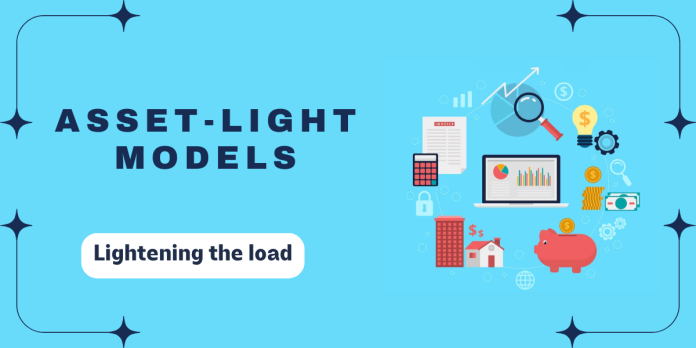Have you ever considered the idea of launching your own business, whether on a large or small scale? If so, one common concern that may have crossed your mind is the challenge of securing funds to acquire essential assets. Assets, such as property, buildings, machinery, technology, and more, play a pivotal role in generating revenue for your business.
However, some companies operate on an ‘asset-light’ model, which means they maintain significantly fewer assets compared to businesses that require substantial and bulky assets. In this article, we will delve into the concept of an asset-light business model, which has become a popular choice in recent times.
To better grasp this concept, let’s consider an example that you’re likely familiar with Zomato. During the second quarter of FY24, Zomato reported impressive revenue of Rs 2,848 crore, reflecting a remarkable 71% year-over-year growth compared to the Rs 1,661 crore in the corresponding quarter of the previous year, all this despite not owning any restaurants.
Do you have any insights into the factors driving this recent growth? It’s worth noting that Zomato has embraced an asset-light business model, allowing it to focus primarily on marketing while outsourcing other operational aspects.
Even during the COVID-19 pandemic, Zomato demonstrated impressive performance due to its online presence. With people avoiding social gatherings during the pandemic, ordering food online became the preferred option, which worked to the company’s advantage.
The Asset-Light Business Model, as its name implies, is a strategy in which a company aims to minimize its investment in physical capital assets and instead concentrates on its core operational activities. This approach involves the outsourcing of non-core functions that would traditionally require significant capital investment. It is often referred to as the “Fly Light Model.”
This model is perfect for those businesses that have great potential for scalability in the future. The world’s largest companies, including Google and Microsoft, are earning huge profits without owning tangible assets of their own.
Check: Google Stock Journey
Advantages of Asset-Light Business Models
- Low Investment: This business model demands a smaller initial capital investment. The initial costs typically include expenses like app development and working capital requirements. Consequently, founders can retain a substantial ownership stake in the early stages of the business.
- Scalability: Asset-light business models primarily rely on intangible assets, making them more cost-effective and quicker to expand. This approach offers enhanced scalability potential with reduced time and financial requirements.
- Flexibility: Asset-light companies possess greater flexibility, particularly in dynamic and rapidly changing environments. They have fewer capital assets to manage compared to asset-heavy businesses, allowing them to adapt more easily to changing market conditions.
- Attracting Investment: The combination of lower capital demands and greater scalability potential makes asset-light models particularly attractive to potential investors. This can lead to increased interest and investment in the business.
- Risk Transfer: Asset-light models enable the transfer of associated risks from the business to external vendors. When a company outsources non-core activities, it also transfers the risks associated with those functions to the external service providers.
Disadvantages of Asset-light business models
- Low Barriers to Entry: Asset-light models are easily adaptable, making it relatively simple for new startups to enter the market. This can lead to increased competition and potentially lower profit margins for existing businesses.
- Obsolescence Risk: Many asset-light companies, such as Airbnb and OLA, rely heavily on the latest technology in their mobile and web applications. Given the rapid pace of technological advancements, there is a significant risk of their business activities becoming obsolete if they fail to keep up with the latest innovations.
- Vendor Disputes: Any disputes or conflicts with vendors or suppliers can harm the company’s sales and overall performance. These disputes may disrupt the supply chain and lead to customer dissatisfaction.
- Dependence on outsourcing: Asset-light models often involve extensive outsourcing of various functions. Over-dependency on vendors to perform critical tasks can lead to vulnerabilities and potential service disruptions if the vendors encounter problems or fail to meet expectations.
It’s essential for businesses considering an asset-light model to weigh these disadvantages against the advantages and carefully plan their strategies to mitigate potential risks.
Conclusion
Asset-light models can serve as an excellent starting point for both startups and large organizations looking to expand their operations. These models have revolutionized the way businesses are managed today, enabling companies to concentrate on their competitive advantages and customer-facing operations to improve profitability in the long run.


